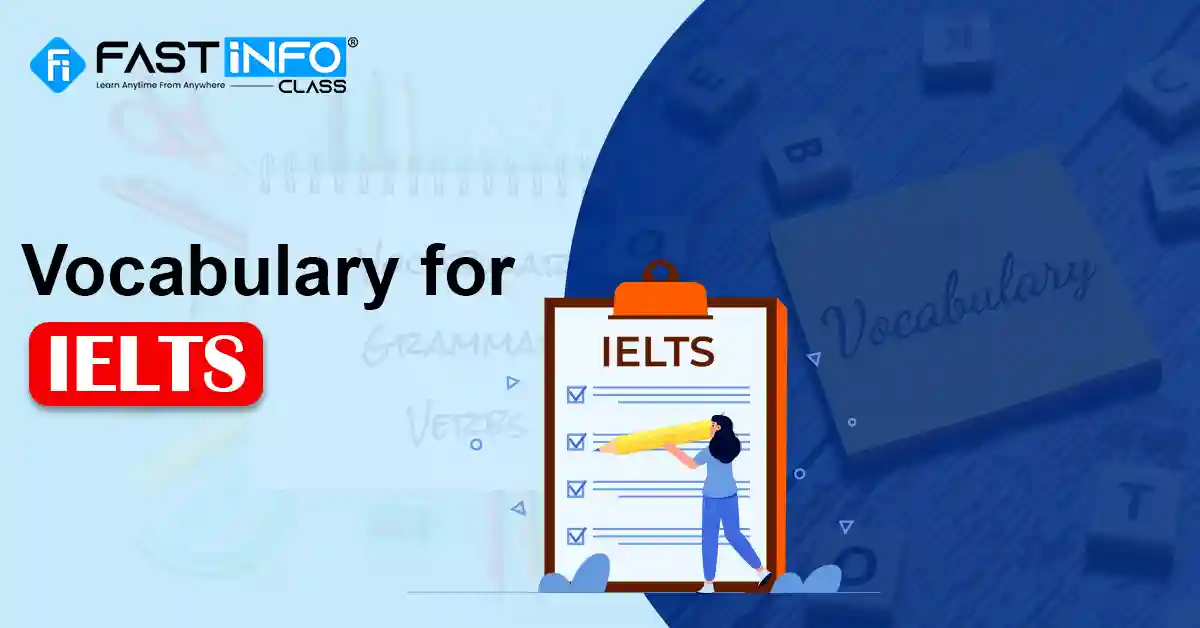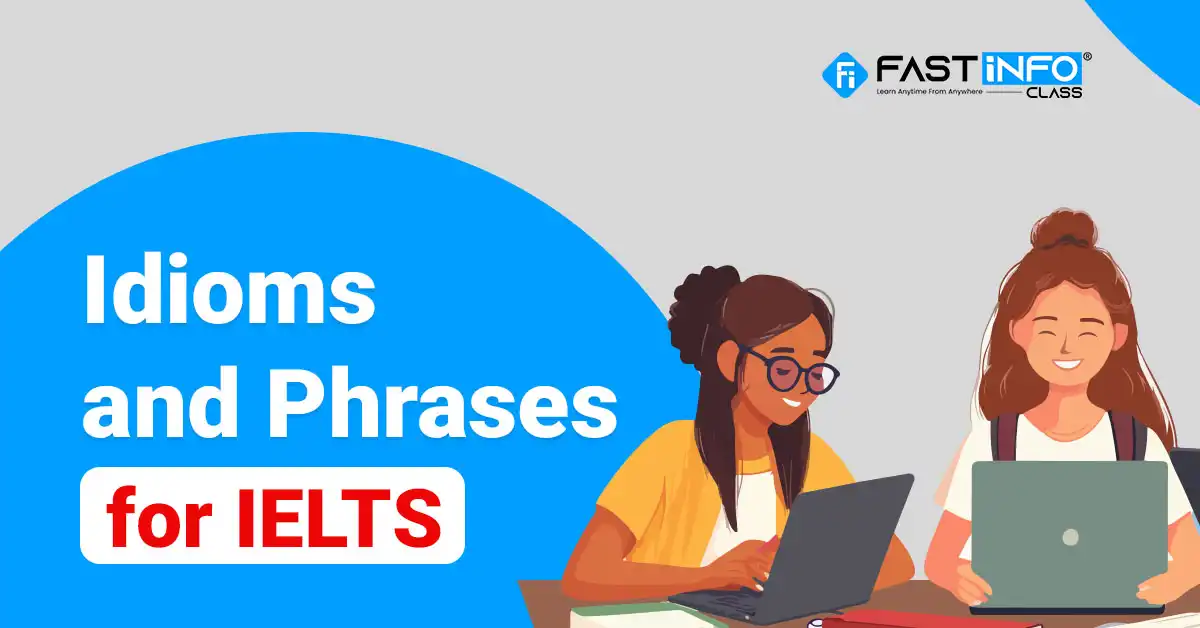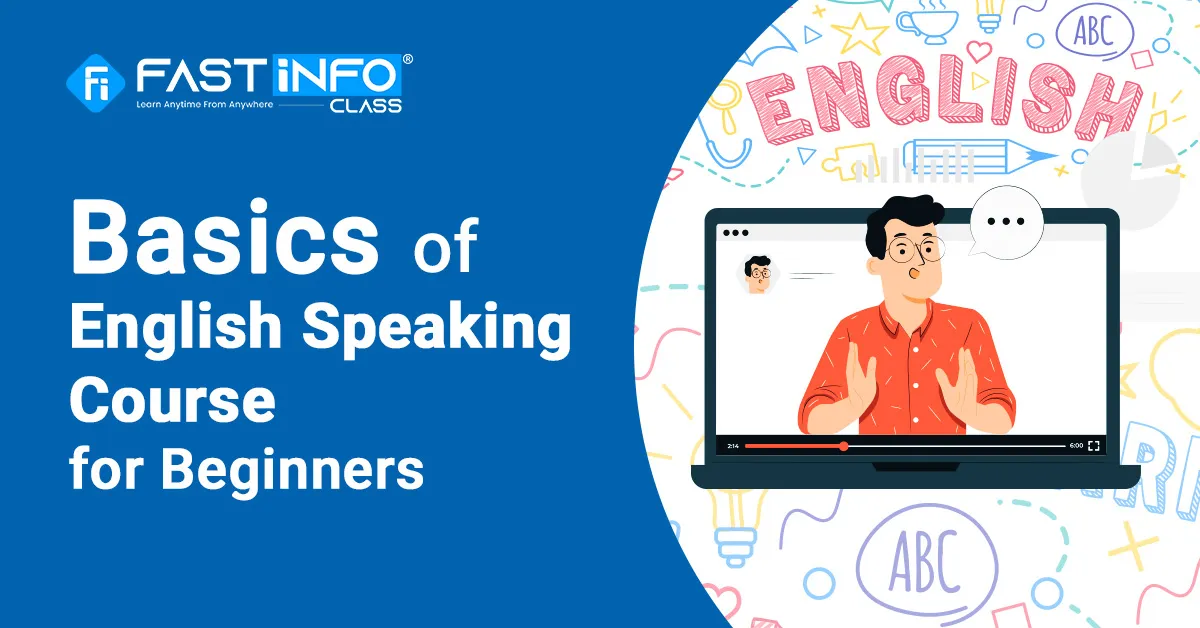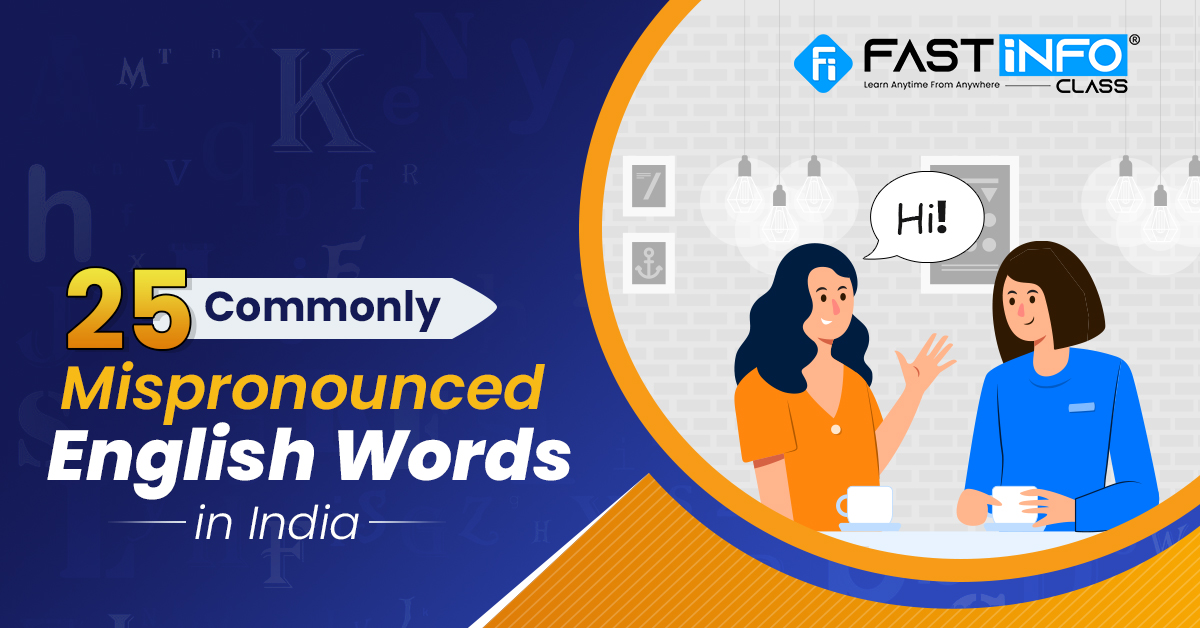10 Effective Ways to Improve IELTS Vocabulary
05 Dec, 2025

 By FastInfo Class
Published On 18 Aug 2025
Category IELTS
By FastInfo Class
Published On 18 Aug 2025
Category IELTS
IELTS is an abbreviation for the International English Language Testing System. It is a globally recognised English proficiency test accepted for study, work, and migration purposes. It evaluates skills in listening, reading, writing, and speaking. Before beginning preparation, having a clear understanding of the IELTS syllabus is important for building an effective study plan. The test is conducted in two versions, including Academic and General Training, depending on the purpose of taking the exam. In this blog, you will learn about the IELTS Syllabus for Academic and General in detail.
Below are the types of IELTS Tests:
The IELTS Academic test assesses whether a candidate is ready to study in an English-speaking academic environment. It suits those who apply for higher education or professional registration in countries like the UK, Australia, Canada, and the USA. The Reading and Writing sections include passages, graphs, and topics that reflect academic settings such as research articles, lecture notes, and academic discussions. The Listening and Speaking sections remain unchanged from other IELTS formats.
Test-takers choose this version when they plan to enter universities or apply for jobs that require formal training or certification.
The IELTS General Training test measures English skills in practical, everyday contexts. It fits those who plan to migrate, work, or study below the degree level in English-speaking countries. The Reading section includes advertisements, instruction manuals, and workplace documents. The Writing section asks the candidate to write letters and short essays on familiar topics. The Listening and Speaking sections match the Academic version.
This test focuses on the ability to understand and use English in daily life, including at the workplace and in social situations.
Additionally, IELTS for UKVI is a secure version of the standard Academic or General Training test, approved for UK visa and immigration purposes. While the test content and scoring method remain the same, it follows extra identity checks and security procedures as required by the UK government. IELTS Life Skills is a separate test that checks only speaking and listening skills, and supports visa applications like family routes, settlement, or citizenship.
The IELTS exam consists of four sections: Listening, Reading, Writing, and Speaking. The total duration is 2 hours and 45 minutes. The first three sections, including Listening, Reading, and Writing, take place in one sitting, without any breaks. The Speaking section takes place either on the same day or within seven days before or after the other sections. The test format remains the same for both Academic and General Training, except for differences in Reading and Writing content.
Here is a detailed overview of the International English Language Testing System (IELTS) exam pattern:
The Listening test lasts 30 minutes. Test-takers answer 40 questions based on four separate recordings. The first two recordings cover everyday social situations, while the last two focus on academic or training-related contexts. Each recording plays once. The questions include multiple choice, sentence completion, and matching exercises. In the paper-based format, test-takers get 10 minutes to transfer answers to the answer sheet. In the computer-based test, only 2 minutes are available to check responses.
The Reading test takes 60 minutes and includes 40 questions. The Academic version provides three long texts taken from books, journals, or magazines. These passages use formal language and present arguments or ideas. The General Training version includes multiple short texts, such as notices, advertisements, and instruction manuals. The questions assess skills such as identifying information, understanding the writer’s views, and matching headings. There is no extra time for transferring answers in either format.
The Writing test also lasts 60 minutes and includes two tasks. Task 1 in the Academic version asks test-takers to describe a graph, chart, table, or process. Task 1 in the General Training version asks for a letter that may be formal, semi-formal, or informal. Task 2 in both versions presents a point of view or problem and requires an essay in response. Each task is assessed based on task completion, organisation of ideas, vocabulary usage, and grammatical accuracy.
The Speaking test lasts 11 to 14 minutes and involves a face-to-face interview with a certified examiner. It includes three parts. In Part 1, the examiner asks general questions about the test-taker’s background, work, or interests. In Part 2, the test-taker speaks for up to two minutes on a topic provided on a task card. Part 3 includes more abstract questions related to the topic from Part 2. The examiner evaluates fluency, vocabulary, grammar, and pronunciation.
There are four types of IELTS syllabus for Academic and General Training:
The Listening section remains the same for both the Academic and General Training tests. It includes four parts. The first part features a conversation in a social context. The second part contains a monologue on a daily topic. The third part presents a discussion between multiple speakers in an academic setting. The fourth part consists of a lecture on an academic subject. Each part contains ten questions, totalling forty questions. The audio includes various English accents. The duration of the test is thirty minutes.
The Reading section differs in content for the two versions. The Academic version includes three long passages taken from journals, books, or research-based sources. These texts contain complex vocabulary and formal structure. They test the ability to understand arguments, logical flow, and detailed information. The General Training version includes short and long texts from advertisements, brochures, notices, and workplace documents. These texts assess the ability to understand practical information. Both versions include forty questions and last sixty minutes.
The Writing section includes two tasks in both versions. In the Academic test, Task 1 presents a diagram, chart, table, or graph. The test-taker must describe and explain the visual data. Task 2 asks for an essay in response to an opinion or problem. In the General Training test, Task 1 asks for a letter that addresses a personal, formal, or work-related situation. Task 2 asks for an essay on a general issue. The total duration is sixty minutes.
The Speaking section is the same for both versions. It takes place face-to-face with an IELTS examiner. The test lasts between eleven to fourteen minutes and includes three parts. Part 1 includes basic questions on personal background. Part 2 provides a task card with a topic. The test-taker speaks for up to two minutes. Part 3 contains follow-up questions related to the topic in Part 2. This section assesses fluency, vocabulary, pronunciation, and grammar.
Here is a detailed explanation of the IELTS scoring system:
The IELTS test has four parts: Listening, Reading, Writing, and Speaking. Each part gets a separate score on a scale from 0 to 9.
A band score shows English skills. Band 9 means expert user, Band 6 means competent user, and Band 4 means limited user.
Each correct answer in Listening and Reading gets one mark. No negative marking exists for incorrect answers.
Raw scores from 40 questions in Listening and Reading convert to band scores using standard conversion charts.
In General Reading, test-takers must get more correct answers than in Academic Reading to reach the same band.
Task Achievement, Coherence and Cohesion, Lexical Resource, and Grammatical Range and Accuracy decide the Writing score.
The Writing Task 2 carries more value than Task 1. Both tasks contribute to the final Writing band.
Fluency and Coherence, Vocabulary, Grammar, and Pronunciation form the Speaking band score.
The average of the four section scores becomes the overall band. The result shows the final score in whole or half bands.
An average ending in .25 rounds up to the next half band. An average ending in .75 rounds up to the next whole band.
Test results remain valid for two years from the test date.
IELTS bands map to CEFR levels. This helps universities and immigration offices understand English proficiency clearly.
Below are the preparation tips for each module:
Conclusion
Understanding the IELTS syllabus for both Academic and General Training is essential for effective preparation. Each version of the test serves a different purpose. The Academic test suits those who plan to study abroad. The General Training test helps with work or immigration. Knowing the structure and topics of all four modules in the IELTS Exam Syllabus supports better planning. It builds confidence and improves focus. A clear grasp of the syllabus leads to higher scores and better results.
If you want to score high in IELTS, contact FastInfo Class. It offers expert-led online coaching with structured lessons, personalised guidance, and real-time doubt clearing all from the comfort of home.
IELTS Academic focuses on language skills needed for higher education and professional registration, while IELTS General Training evaluates English for everyday work and social situations, especially for immigration purposes.
Yes, the Listening and Speaking sections remain the same in both versions. Only the Reading and Writing sections differ in terms of content and task types.
IELTS includes four main components: Listening, Reading, Writing, and Speaking. Each module tests a different language skill and follows a specific format.
While the test format stays consistent, the topics and questions vary in each test session to ensure fairness and accuracy. There is no fixed yearly syllabus.

10 Effective Ways to Improve IELTS Vocabulary
05 Dec, 2025

Common IELTS Speaking Topics & Questions for 2025-2026
02 Dec, 2025

Common Idioms and Phrases for IELTS
02 Dec, 2025

Best Conversation Topics In English For Daily Use
02 Dec, 2025

Top 6 Tips on How to Improve English Speaking Skills
18 Nov, 2025

Daily English Conversation Practice for Beginners: 50 Useful Topics
29 Jun, 2023

Must Read Novels to Improve English for Beginners to Advanced
21 Feb, 2023

Top 15 Spoken English Books to Enhance Your Fluency
09 Sep, 2023

English Speaking Course for Beginners - Everything you must know
22 Sep, 2021

25 Commonly Mispronounced English Words in India
26 Apr, 2024